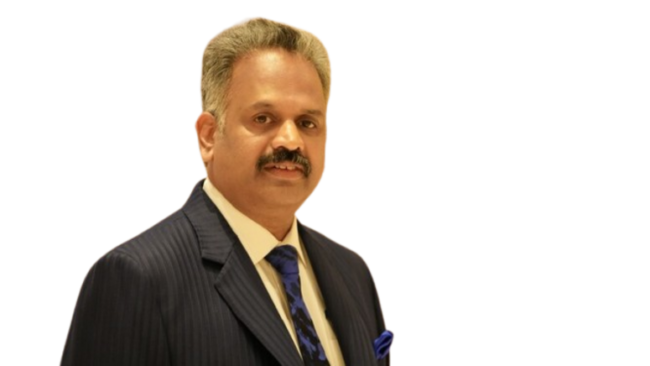
“India stands at the cusp of transforming from a services-based to a product-based economy. With our unmatched software talent and growing manufacturing base, the next two decades present a historic opportunity,” says Sridhar Dharmarajan (DS), Executive Vice President & Managing Director, Hexagon Manufacturing Intelligence – India.
Neha Basudkar Ghate
Q. India is steadily positioning itself as a global manufacturing hub through initiatives like ‘Make in India’ and PLI Schemes. What are the major gaps that still need to be addressed in terms of digital maturity and quality infrastructure?
India has made notable strides toward becoming a global manufacturing powerhouse, driven by initiatives such as ‘Make in India’ and the PLI schemes. A few years ago, manufacturing accounted for just 12–13% of India’s GDP. Thanks to these efforts, that figure has now increased to approximately 18%, marking substantial progress.
However, critical gaps remain, particularly in the MSME sector, which forms the backbone of Indian manufacturing. While large OEMs have already adopted Industry 4.0 and smart manufacturing practices, MSMEs often struggle due to limited access to capital and advanced digital technologies. Bridging this gap is essential if India has to reach the target of 30% GDP contribution from manufacturing.
To enable this, we must strengthen quality infrastructure by establishing metrology labs, training skilled auditors, and deploying affordable digital solutions. Encouragingly, initiatives like the Industry 4.0 Centre at CMTI in Bangalore provide MSMEs with access to explore and adopt relevant digital tools, helping them become globally competitive.
Q. What are the key enablers for India to accelerate its manufacturing growth and become a global hub? How important is the role of MSMEs in this journey?
India’s ability to emerge as a global manufacturing hub hinges on making advanced technologies accessible and affordable for MSMEs. The government’s proactive stance, including the rollout of PLI schemes, is already creating a favourable environment. Coupled with India’s robust engineering talent, stable policy landscape, and capable workforce, we are well-positioned for accelerated growth.
However, inclusive growth is imperative. MSMEs are pivotal to scaling up manufacturing output and enhancing global competitiveness. Supporting them through financial incentives, digital skilling, and infrastructural support will significantly shorten the journey toward achieving our GDP and industrial ambitions.
Q. How important is the integration of CAD/CAM with other digital tools like simulation, metrology, and PLM in building a connected manufacturing ecosystem?
Three decades ago, CAD/CAM and PLM systems were the domain of large corporations due to their high cost. Today, these tools are essential and far more accessible. The shift from 2D drawings to 3D digital models has become foundational to modern manufacturing, enabling real-time simulation, faster design iterations, and higher precision.
A connected ecosystem integrating CAD/CAM, simulation, metrology, and PLM ensures closed-loop manufacturing. Metrology bridges the digital-physical divide by validating real-world outcomes against virtual designs. PLM plays a critical role by offering version control, traceability, and collaboration.
India is already witnessing increasing adoption of these tools, not only among OEMs but also among progressive MSMEs. For software and digital technology providers, India presents a significant growth market aligned with global manufacturing trends.
Q. Tool and die makers have mostly focused on the automotive industry. Meanwhile, sectors like aerospace, defence, semiconductors, and electronics are growing in India. How would you advise tool and die makers to adopt new technologies and explore these emerging industries?
Traditionally focused on the automotive sector, tool and die makers now have a compelling opportunity to expand into aerospace, defence, electronics, and semiconductors. Digital manufacturing technologies offer immediate and measurable benefits by reducing the risks of costly failures due to tool breakage or part rejection.
The adoption of advanced CAM, simulation, and metrology tools enhances precision, ensures product conformity, and minimises rework. The rapid uptake of these technologies in Indian tool rooms, as seen at IMTEX and other trade forums, underscores the sector’s readiness for transformation and expansion.
Q. Why is it crucial for MSME tool rooms to embrace advanced technologies like simulation and metrology in today’s evolving automotive landscape?
The reduction in product development timelines to about 12–18 months has shifted the auto industry’s dynamics. OEMs now focus on core integration and design while outsourcing manufacturing to tool rooms and MSMEs. This evolution necessitates the adoption of advanced technologies such as simulation and metrology to meet OEM standards.
Digital validation tools are no longer optional but critical for toolmakers seeking to participate in high-value supply chains. The ecosystem is maturing rapidly, and embracing technology will not only improve quality but also secure long-term relevance in a competitive landscape.
Q. How do you view India’s potential to leapfrog into global manufacturing leadership by leveraging its software strength and international collaborations?
India’s collaborations with global manufacturing leaders like Japan, Germany, Switzerland, Sweden, and China have significantly contributed to its industrial maturity. These partnerships have accelerated capability building and facilitated the adoption of global best practices.
India’s manufacturing evolution is evident in sectors such as automotive, medical devices, electronics, and aerospace. The nation’s ability to leapfrog legacy systems by directly adopting cutting-edge technologies is a key strategic advantage.
Emerging fields like AI, EVs, additive manufacturing, and hydrogen energy have reset the global innovation baseline. With software now comprising over 50% of a vehicle’s value, India’s leadership in software engineering positions it to redefine the future of mobility and manufacturing.
India stands at the cusp of transforming from a services-based to a product-based economy. With our unmatched software talent and growing manufacturing base, the next two decades present a historic opportunity. I am confident that India will assert itself as a global leader across manufacturing, technology, and industrial innovation.
This interview was published in TAGMA Times




COMMENTS